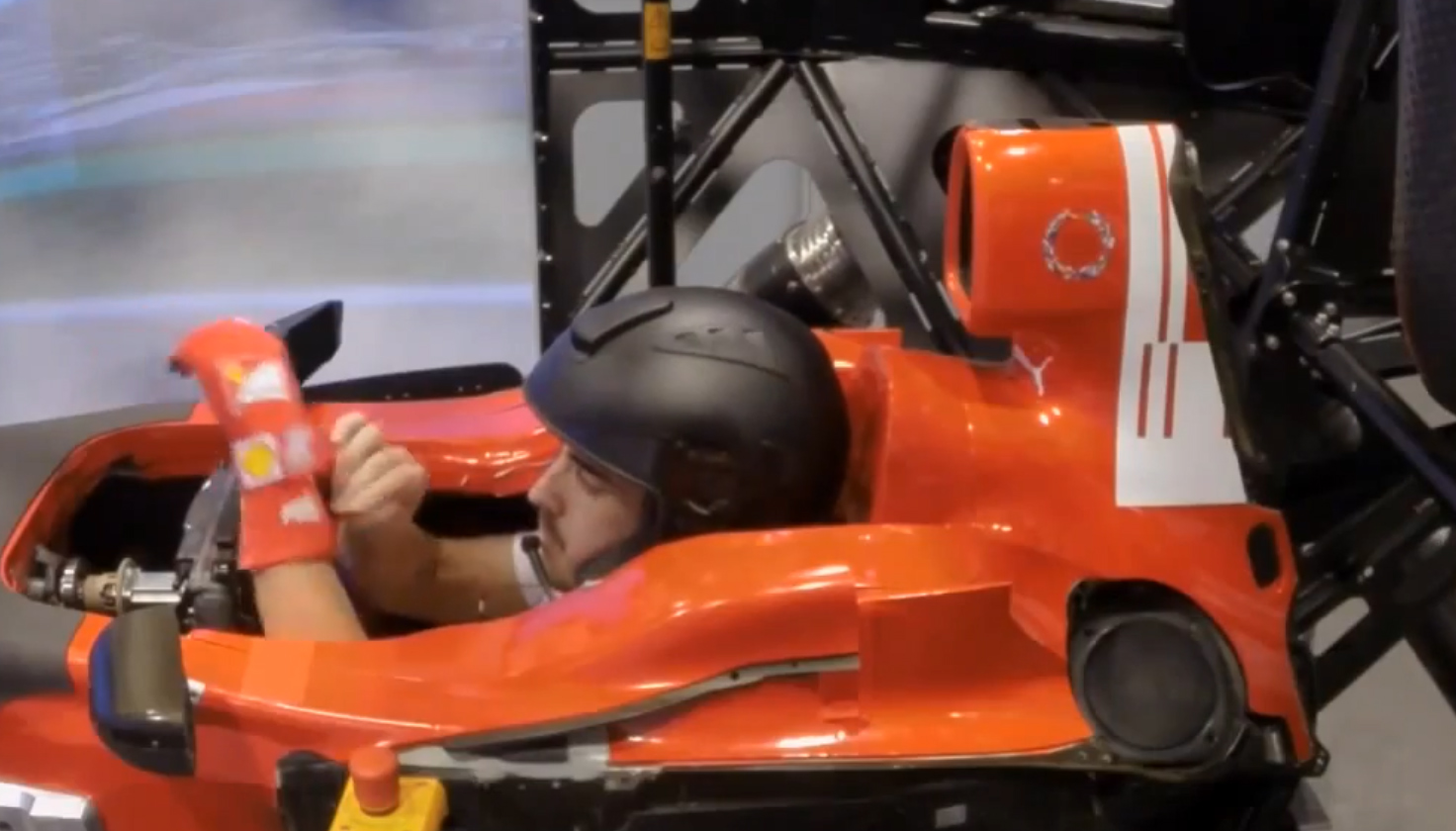If you haven’t seen it, check out the racing simulator used by Ferrari’s F1 team, certainly one of the most advanced in existence. As well it should be at a cost of some $6 million!
Housed in a dedicated, high-ceiling building and weighing in at over 4000 lbs, the fully enclosed simulation pod rests atop six robust actuator struts and is controlled by ten multi-processor computers with a total of more than 60 gigabytes of ram. Mind boggling.
It’s where Fernando Alonso and now, when he can be persuaded, Kimi Räikkönen log hours of testing while engineers in an adjoining room collect and record data from an array of monitors – about six GB in a day! In these times of reduced budgets – okay, everything is relative – and limited track testing, the Ferrari simulator is an invaluable tool to guide car design and, throughout a season, to develop new hardware and software schemes by plugging driver input into the process.
With a mega-setup like this, drivers can accurately familiarize themselves with control systems and of course, the gearing and rhythm for any particular circuit, but arguably, these massive installations are skewed more to the needs of engineers than driver experience. So CXC’s Chris Considine found recently when he drove a similar rig operated by another F1 team (which must be unnamed) in Europe.
Afterward, their chief simulator engineer asked what he thought of the ‘feel’ of their simulator.
“I said I was kind of surprised that with the capability of their motions system, it felt like there wasn’t nearly enough deceleration g-force. His answer was really interesting. He said all their data spreadsheets validated the forces that they reproduced in the simulator perfectly. But then he said that it was funny I mentioned that, because their drivers said the same thing.’
“I thought to myself, that it figures. A simulator built by an engineer for an engineer. Not really our priority at CXC.
“I have to say, though, it was pretty cool to be able to climb into a real F1 cockpit, this gigantic spider-like rig like some war machine out of the old Starwars movies, and the motion system power was definitely impressive.
“But the laws of physics apply. What was missing were the quick, more subtle movements and vibrations, sensations that, combined with the basic motions, add up to a sense of ‘reality.’ That’s what’s inevitably lost in high-mass systems. And that’s what our pro drivers, some of whom also use these high-tech, high-buck simulators, all say.
“They ‘feel’ more in the CXC simulators, more feedback from the controls and more from little bumps and subtle road surface changes, so the total experience is more realistic.”
And that’s the thing, while data is important to an F1 team, really, our Motion Pro II is all about driver experience. Or, after a five-minute hardware changeover, pilot experience.

